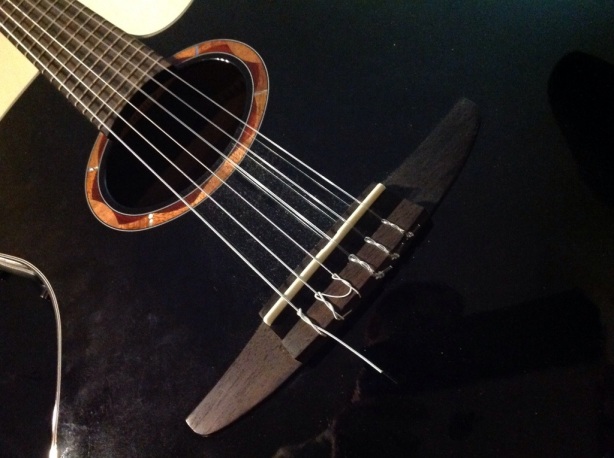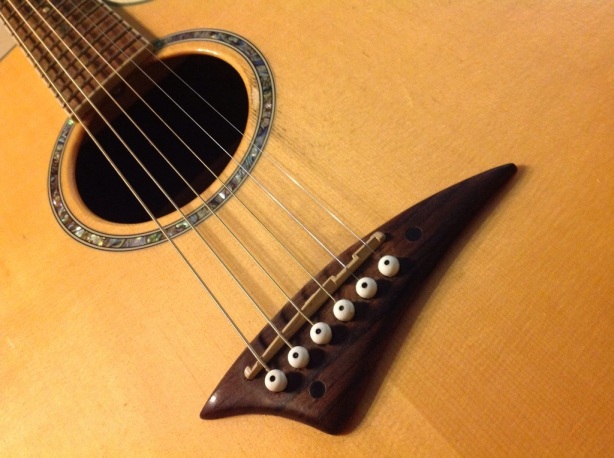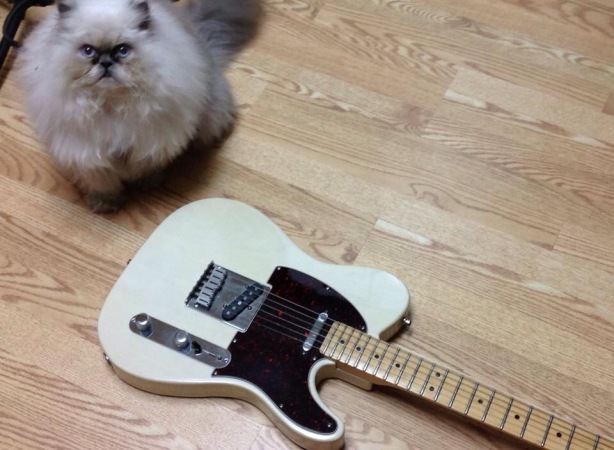I am often asked, “What is a good guitar for a beginner?” Well, the answer is as simple as it is difficult. What I usually offer is a list of things I expect from an instrument and what types of things to avoid. So, in this post I plan to both simplify and answer the question.
Let’s break it up into sections, because there is always more information than what you personally need in the all-inclusive answer to this fairly vague question. I will start by cutting this question into three groups based on the sounds you are looking to make. The first group is the classical/flamenco group. The next group is the pop/folk/acoustic group, and the last is the electric guitar group. If you know which group you are, you can skip to the appropriate section. If not, read on.
What kind of guitar do I need?
There are countless guitars out there and new ones coming to market every year. Determining the type of guitar you are looking for is usually as simple as looking at what kinds of music you plan to learn. If you identify your group, read your section below regarding your options given your choices in music.
Classical/Flamenco – This group would primarily be students of classical, flamenco, and other types of finger style guitar (playing without a pick, or using claw-style picks). These guitars have three nylon strings and three steel strings. Their bodies are smaller than their steel-string brothers, their necks are shorter and their fingerboards are flat and wide. There are many small differences that makeup a huge difference all together. The nylon strings are easier on the fingers, however their wider spacing makes them less desirable for pop music. If you like the work of Francisco Tarrega, Fernando Sor, John Williams (guitarist), and other similar players, this may be your group. It is notable that Willie Nelson’s famous “Trigger” guitar is a nylon-string classical.
Pop, Folk, Acoustic – This group would be made up mostly of players that enjoy the instantly recognizable and culturally popular steel-string acoustic guitar. With a thinner neck, rounded fretboard and large body for maximum projection, the acoustic guitar is the choice of many players from Jack Johnson to Bob Marley to Stevie Ray Vaughan (when he’s not playing an electric). Acoustic guitar is the main instrument for folk music and many other styles. It is versatile and welcome in nearly every genre. Even Brazilian speed-metal band Sepultura used them for a speed metal tune titled Kaiowas on their Roots Bloody Roots album. It is not your guitar of choice if metal is your choice in music, but it is something to consider.
Electric Guitar – This group is easy. Do you want to rock? If the answer is yes, then this is for you. But wait! What if you don’t want to rock? There is still hope. The electric guitar is incredibly versatile and absolutely necessary for many other genres, as well. Electric guitar can be used for nearly any style, but is either a staple or a welcome addition in jazz, blues, country, reggae, ska, disco, punk, surf, hip hop, rap, pop, bluegrass, adult contemporary, modern secular music, electronic music, and still many more.

Classical/Flamenco/Fingerstyle
For beginners, there are lots of affordable options in the nylon-string, classical guitar department. The good news is that classical guitar is a design that has been around as it is now for centuries and is rooted firmly in its heritage. The best classicals in the world are made in Spain and most in Barcelona. There are many other non-Spanish makers that are brilliant, however Barcelona, Spain is to the classical guitar as Paris, France is to woodwinds, or USA is to electric guitars. This can come at a high price, so we often look elsewhere for our first few guitars. You can dream about your Ramirez or Fleta while you save your dimes, in the meantime let’s point out some features to look for and some specific guitar recommendations.
FEATURES: One of the most desirable features for any acoustic guitar is solid wood. Laminated back and sides is an exception we will have to make to keep prices low, however solid top guitars can be had for $200 or less. Check over the body for flaws at any place where wood comes together. Inspect the entire neck, heel, top, back and sides for any cracks to the finish or the wood. Any cracks will be bad for you over time. On the used market, cracks in the finish are unavoidable, but cracks in the wood is unacceptable. This will worsen over time and hurts the tone quality dramatically.
RECOMMENDED GUITARS: Yamaha CG series guitars are reliable, decent playing and sounding instruments. When it comes to your first, plan to spend around 150-200 and go with the Yamaha. It will do you right for now and later makes an excellent campfire guitar. You may want to consider the Manuel Rodriguez y Hijos Cabellero series, if you want to start out with an affordable Spanish classical. Classical guitars do not require any additional equipment.

Pop, Folk, Acoustic
The sound of the acoustic guitar has wooed women for years upon years. From the pulsing hands of Elvis Presley to the effortless playing of guitar master Django Reinhardt, the steel string guitar is a staple of modern music. With six steel strings, the steel string guitar (commonly “acoustic guitar”) is the toughest on the fingers. This makes it the ideal choice for a beginner, as it will help develop calluses quickly. For country, an acoustic guitar is central. For any strumming, the acoustic guitar is the front runner. For songwriting, even writing metal, it is handy to play the song acoustically. Without effects, it is easier to hear a song’s true sound. It is said that a good song is a good song, no matter what you play it on. An electric guitar can sometimes hide certain notes that really do not belong. For accompanying a solo voice, it is hard to beat an acoustic guitar. The volume level of the guitar is ideal for the volume of most singing voices, allowing you to perform anywhere at any time. This is a huge advantage. Acoustic guitars can run anywhere from $100 up to $100,000. They are popular and vary widely in quality.
FEATURES: Look for a solid top. The sound of a solid top is just more consistent and pure than a laminate top. Laminate sides and back is an acceptable concession to make in the face of the price tag, but a solid top can be had under $200 and is a good choice for the long haul. Otherwise, check fit and finish. Look for cracks in the wood. Look for jagged edges on the frets and inspect how the fretboard lays on the neck for clean lines. Look at string height, as well. If the strings are too high, it will be difficult to play. Lowering the strings on an acoustic is a job for an experienced guitar tech and not necessarily inexpensive. Try to buy one that you like as is, rather than planning to set it up later when it comes to acoustics.
RECOMMENDED GUITARS: With inexpensive acoustics, I have been very pleased with the Yamaha F series guitars. They are well made, sound decent, play decent and aren’t a burden on the budget. Some well known brands like Fender do make acoustic guitars, but I have never been too impressed with the quality. They make excellent electric guitars, but the acoustics leave something to be desired. High end recommendations: Taylor, Martin, Breedlove, Guild, and Gibson. No additional equipment is required for steel string acoustic guitars.

Electric Guitar
The electric guitar is best known for its role in the great rock and roll movement that swept the last half of the 20th century and continues to dominate radio stations today. Rock music couldn’t truly exist without the invention of the electric guitar. Most electrics are solid body guitars, and only have small sections cutout to accommodate the electronics inside the instrument. Electric guitar has a barely audible sound without the assistance of an amplifier, so you will want to be prepared to shell out a couple hundred for a decent amp. Electric guitars can be run through headphones for private playing or through massive stacks of amplifiers for playing in an arena. With thinner strings, the electric is fairly easy on the fingers and won’t necessarily help build calluses very quickly, but they will develop over time. Once you have an amp and guitar, you can also add effects like reverb, distortion/overdrive, delay, and other types of effects that in part helped make the electric guitar one of the world’s most popular instruments. If you are planning on playing metal of any kind, you will want an electric guitar.
FEATURES: Look for a fairly straight neck and check every fret for unwanted buzz. All the notes of all the strings should make a decent sound without too much buzzing noise. If it’s buzzy, look for another. It can be corrected, but if you don’t know what to look for, it could be more costly to fix than it is worth. Try to find one you can play right out of the box. Most large brands offer a value model. Some of them are great and others are not. All need to pass the buzz test. Also, look at the quality of the overall construction. If it is rough around the edges, then it’s rough inside, too.
RECOMMENDED GUITARS: There are so many great entry level guitars, I’ll list as many as I can think of that are good starters. Yamaha Pacifica 112 is a great instrument around the $200 mark and is comparable to the Mexican Fender Strat at half the price. Epiphone Les Paul Junior is a decent option. Squier guitars are hit and miss. Some can be good, while most are not. Poor quality control at the factory means you need to do it at the store. Dean guitars has some good entry level guitars, as well as Schecter and Washburn. If I was buying my first guitar with a $200 budget, I’d look at the Pacifica 112. At the $400 mark, we can add the Fender Strat (Mexico) and the Epiphone Les Paul or SG, and for a little more the Minarik Lotus is an unbeatable guitar in the under $600 range. Among my other customs and USA made guitars in my collection, my Minarik import Lotuses are used most often for teaching and international touring. For recording and domestic touring, I tend to use the high end professional instruments. Electric guitars require additional equipment. You will need an amplifier, picks, guitar strap and instrument cable. Everything can be had in a starter pack, however choose wisely as you often can not test the instrument before purchase in a pre-pack. In my opinion, the best amps to learn with (not big enough to compete with a drumset, but loud enough for practicing) are the Orange Crush CR20LDX, Orange Micro Terror, and the Line 6 Spider. The Crush and Spider both feature an array of effects, which can be inspiring as you dial in some interesting sounds. The Micro Terror is mentioned because it is an affordable amp with tube technology that just sounds incredibly great. It doesn’t feature any effects, but it’s sound is just as creamy as can be. Wonderful amp. I use one daily in my lesson room.
Summary
In closing, the answers you need really depend on many factors. Hopefully, this will help you determine the instrument that fits your needs best. Every manufacturer makes a great guitar now and then, even if they usually make junk. Sometimes you need to test them out to really see what they are. For instance, Squiers are typically substandard in my opinion, but I have played a few that were excellent. It’s the luck of the draw in the $200 range. In the $2000 range, all guitars play pretty nicely. Even then, some are better than others. I certainly have not liked every Les Paul I’ve ever played, but I love the one I currently use. It’s all up to the player and the guitar. Does it speak to you?




